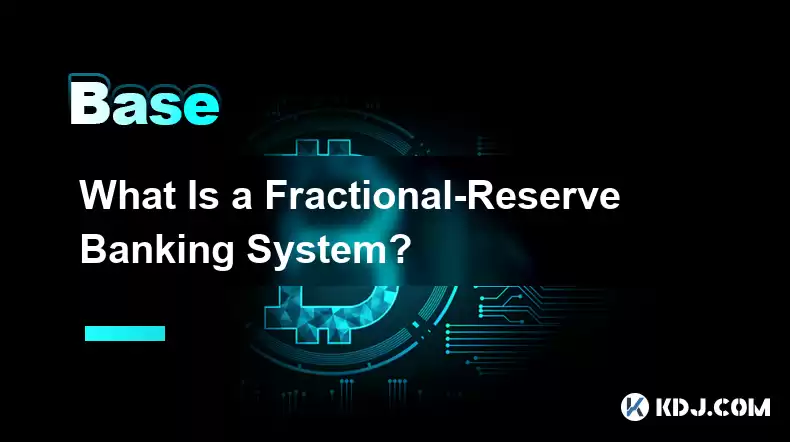-
 Bitcoin
Bitcoin $115000
0.12% -
 Ethereum
Ethereum $3701
4.50% -
 XRP
XRP $3.081
2.99% -
 Tether USDt
Tether USDt $0.0000
-0.01% -
 BNB
BNB $767.9
1.45% -
 Solana
Solana $169.5
3.13% -
 USDC
USDC $0.9999
0.01% -
 Dogecoin
Dogecoin $0.2106
4.30% -
 TRON
TRON $0.3334
1.62% -
 Cardano
Cardano $0.7564
2.54% -
 Stellar
Stellar $0.4165
0.76% -
 Hyperliquid
Hyperliquid $38.75
0.25% -
 Sui
Sui $3.593
3.00% -
 Chainlink
Chainlink $17.08
3.59% -
 Bitcoin Cash
Bitcoin Cash $573.6
4.35% -
 Hedera
Hedera $0.2508
-0.84% -
 Avalanche
Avalanche $23.07
6.46% -
 Ethena USDe
Ethena USDe $1.001
-0.02% -
 Litecoin
Litecoin $120.8
8.17% -
 UNUS SED LEO
UNUS SED LEO $8.943
-0.32% -
 Toncoin
Toncoin $3.400
-5.60% -
 Shiba Inu
Shiba Inu $0.00001255
1.54% -
 Uniswap
Uniswap $9.908
6.32% -
 Polkadot
Polkadot $3.718
2.10% -
 Monero
Monero $303.0
-0.74% -
 Dai
Dai $0.9999
-0.02% -
 Bitget Token
Bitget Token $4.392
0.91% -
 Cronos
Cronos $0.1403
6.31% -
 Pepe
Pepe $0.00001076
1.13% -
 Aave
Aave $267.2
1.80%
What Is a Fractional-Reserve Banking System?
In fractional-reserve banking, depositors place money in banks, allowing banks to lend out the majority of those funds to borrowers for revenue.
Dec 16, 2024 at 09:10 pm

Key Points
- Definition and overview of fractional-reserve banking
- Mechanics of fractional-reserve banking
- Risks and benefits of fractional-reserve banking
- Impacts of fractional-reserve banking on cryptocurrency
- Alternatives to fractional-reserve banking
What Is a Fractional-Reserve Banking System?
A fractional-reserve banking system is a financial system in which banks maintain only a fraction of their total deposits in liquid form, while lend out the majority of the remaining funds. This practice allows banks to maximize their profits, but it also poses some risks to the stability of the financial system.
Mechanics of Fractional-Reserve Banking
- Depositing: When a customer deposits money into a fractional-reserve bank, the bank records the deposit as a liability on its balance sheet.
- Reserve ratio: The bank is then required to set aside a certain percentage of the deposit as a reserve, typically between 10% and 20%. This reserve ratio is determined by regulations set by the central bank.
- Loaning: The remaining balance can then be loaned out to other borrowers. The interest earned on these loans is the primary source of revenue for fractional-reserve banks.
- Multiplicative effect: The money that is loaned out can be deposited in other banks and the process repeats itself, leading to a multiple expansion of the money supply.
Risks and Benefits of Fractional-Reserve Banking
Risks:
- Bank runs: If depositors lose confidence in a bank's ability to repay their deposits, they may rush to withdraw their money. If the bank does not have enough liquidity to cover these withdrawals, it can lead to a bank run and potential collapse.
- Inflation: If banks lend out too much money, it can lead to inflation as the additional money chases a limited supply of goods and services.
- Financial instability: Fractional-reserve banking can amplify financial shocks and lead to systemic instability.
Benefits:
- Economic growth: Fractional-reserve banking allows banks to lend more money, which can stimulate economic growth.
- Efficient use of capital: Banks can allocate capital more efficiently by lending it out to borrowers who need it most.
- Financial inclusion: Fractional-reserve banking can provide access to banking services for underserved populations.
Impacts of Fractional-Reserve Banking on Cryptocurrency
Fractional-reserve banking has a significant impact on the cryptocurrency ecosystem:
- Volatility: The inherent risks of fractional-reserve banking can contribute to volatility in cryptocurrency markets, as depositors may seek safe havens during periods of financial stress.
- Inflation: If fractional-reserve banks lend out too much money, it can lead to inflation, which can devalue cryptocurrency holdings.
- Regulation: Cryptocurrencies are not currently subject to fractional-reserve banking regulations, but this may change as the industry matures.
Alternatives to Fractional-Reserve Banking
Several alternatives to fractional-reserve banking have been proposed, including:
- Gold standard: A system in which the money supply is backed by a physical commodity, such as gold.
- Full-reserve banking: A system in which banks are required to hold 100% of their deposits in liquid form.
- Blockchain-based banking: A system that utilizes blockchain technology to create a transparent and auditable financial system.
FAQs
Q: Is fractional-reserve banking necessary for economic growth?
A: While fractional-reserve banking can stimulate economic growth, it is not essential. There are other ways to finance economic activity, such as government spending and private investment.
Q: How does fractional-reserve banking differ from full-reserve banking?
A: In fractional-reserve banking, banks only hold a fraction of their deposits in liquid form, while in full-reserve banking, banks are required to hold 100% of their deposits in liquid form.
Q: What are the potential risks of fractional-reserve banking?
A: Fractional-reserve banking poses risks such as bank runs, inflation, and financial instability.
Q: How does fractional-reserve banking impact cryptocurrency markets?
A: Fractional-reserve banking can contribute to volatility, inflation, and regulation in cryptocurrency markets.
Q: Are there any alternatives to fractional-reserve banking?
A: Alternatives to fractional-reserve banking include the gold standard, full-reserve banking, and blockchain-based banking.
Disclaimer:info@kdj.com
The information provided is not trading advice. kdj.com does not assume any responsibility for any investments made based on the information provided in this article. Cryptocurrencies are highly volatile and it is highly recommended that you invest with caution after thorough research!
If you believe that the content used on this website infringes your copyright, please contact us immediately (info@kdj.com) and we will delete it promptly.
- Crypto Airdrops: Your August 2025 Guide to Free Tokens & Opportunities
- 2025-08-05 13:45:13
- Luxury Dining Reimagined: St. Regis Singapore & Marriott's Culinary Celebration
- 2025-08-05 13:45:13
- Fancy Farm Picnic: A Sneak Peek at the 2026 US House Race
- 2025-08-05 13:50:12
- Cardano Price, ADA Forecast & Ethereum Price: What's the Buzz?
- 2025-08-05 13:50:12
- Velo Universe, DEX, and DeFi Security: Navigating the Future of Decentralized Trading
- 2025-08-05 09:25:13
- Bitget Wallet Revolutionizes Solana with Gas-Free Transactions: A New Era for DeFi
- 2025-08-05 09:25:13
Related knowledge

What is the difference between CeFi and DeFi?
Jul 22,2025 at 12:28am
Understanding CeFi and DeFiIn the world of cryptocurrency, CeFi (Centralized Finance) and DeFi (Decentralized Finance) represent two distinct financia...

How to qualify for potential crypto airdrops?
Jul 23,2025 at 06:49am
Understanding What Crypto Airdrops AreCrypto airdrops refer to the distribution of free tokens or coins to a large number of wallet addresses, often u...

What is a crypto "airdrop farmer"?
Jul 24,2025 at 10:22pm
Understanding the Role of a Crypto 'Airdrop Farmer'A crypto 'airdrop farmer' refers to an individual who actively participates in cryptocurrency airdr...

What is the difference between a sidechain and a Layer 2?
Jul 20,2025 at 11:35pm
Understanding the Concept of SidechainsA sidechain is a separate blockchain that runs parallel to the main blockchain, typically the mainnet of a cryp...

What is the Inter-Blockchain Communication Protocol (IBC)?
Jul 19,2025 at 10:43am
Understanding the Inter-Blockchain Communication Protocol (IBC)The Inter-Blockchain Communication Protocol (IBC) is a cross-chain communication protoc...

How does sharding improve scalability?
Jul 20,2025 at 01:21am
Understanding Sharding in BlockchainSharding is a database partitioning technique that is increasingly being adopted in blockchain technology to enhan...

What is the difference between CeFi and DeFi?
Jul 22,2025 at 12:28am
Understanding CeFi and DeFiIn the world of cryptocurrency, CeFi (Centralized Finance) and DeFi (Decentralized Finance) represent two distinct financia...

How to qualify for potential crypto airdrops?
Jul 23,2025 at 06:49am
Understanding What Crypto Airdrops AreCrypto airdrops refer to the distribution of free tokens or coins to a large number of wallet addresses, often u...

What is a crypto "airdrop farmer"?
Jul 24,2025 at 10:22pm
Understanding the Role of a Crypto 'Airdrop Farmer'A crypto 'airdrop farmer' refers to an individual who actively participates in cryptocurrency airdr...

What is the difference between a sidechain and a Layer 2?
Jul 20,2025 at 11:35pm
Understanding the Concept of SidechainsA sidechain is a separate blockchain that runs parallel to the main blockchain, typically the mainnet of a cryp...

What is the Inter-Blockchain Communication Protocol (IBC)?
Jul 19,2025 at 10:43am
Understanding the Inter-Blockchain Communication Protocol (IBC)The Inter-Blockchain Communication Protocol (IBC) is a cross-chain communication protoc...

How does sharding improve scalability?
Jul 20,2025 at 01:21am
Understanding Sharding in BlockchainSharding is a database partitioning technique that is increasingly being adopted in blockchain technology to enhan...
See all articles

























































































